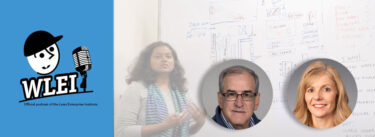I wish I knew more about learning. I know quite a lot, just not nearly enough. Like you, I’ve been educated – hopefully even learning throughout that process – for many (too many?) years. I’ve – again hopefully – continued to learn outside of formal “education” throughout my life, as have you, in work and personal life. I’ve also read a library full of books on just about every dimension of learning you can imagine: child development, adult learning, socialization as learning, organizational learning, the neurological science of learning, and of course the various principles and techniques of learning as they apply specifically to lean practice.
If you’ve read this far, you know by now that lean practice is in fact all about learning. At the individual level, at the organizational level. If many corners of the lean movement started out with an unbalanced focus on tools and techniques, most lean practitioners know by now that no lean effort will succeed on the operational side without success on the social side – the dimension of people working and learning together.
So, here’s an observation. Recently I was part of a passionate discussion with a high-powered group of leaders regarding the requirements of successful lean leadership. The group listed a list of things that leaders need to do to lead a successful lean transformation. The only thing I added was the following.
There is one characteristic that is common among every successful lean practitioner I have met: they love to learn. They are curious by nature, but more, they are willful learners. You could say that, as humans, we all learn all the time, right? Maybe, but here are two things to consider. First, that modifier of “willful” is important. You can usually learn more effectively if you are intent on learning from the beginning of each activity, rather than sit back to passively expect that learning will happen. Listen to your favorite athlete or musician describe how he or she attained their skill.
Secondly, sometimes we become content to fall into the more complacent frame of mind of the “knower.” It feels comforting to think you know the answer in each situation. In fact, most traditional organizations encourage such a mindset. In such settings, leaders at all levels are expected to know, to know the best way, the right way, to know the solution, no matter what comes up. While knowing things is important, such an attitude – so often so pervasive – can disregard the value of stopping to ask simply, “What do we truly know about this situation, and what do we need to learn?”
In The Learner’s Path – Practices for Recovering Knowers, author Brian Hinken explores the minds and behaviors of “knowers” and “learners.” In reality, we all switch from being learners in one instance to knowers in the next. But, the more we train ourselves to embrace the learner within us, the more … we will learn. LEI faculty member and lean coach Jim Luckman makes that distinction – among others – a key component of our intense three-day Transformational Leadership workshop. If it’s a challenge to maintain a learner’s mind as an individual, it’s exponentially harder when we are working together as a group, with deadlines looming, problems rampant, and the demand for knowing the right answer omnipresent.
It’s a challenge to do this, and that’s why lean systems (the ultimate social-technical system, where the operating processes are the people developing processes) respond to this challenge with specific tools and methods—mechanisms for lean learning. There are a handful of core lean practices whose purpose is to serve as mechanisms to enable the practice of PDCA and willful learning, notably: Standardized Work, Kata, Strategy Alignment (aka hoshin kanri) and the A3 process among others. Each is a PDCA based learning cycle – the key to learning faster and deeper in dynamic real-world circumstances is to cycle willfully and cycle fast.
Consider the story of my longtime friend and colleague Gary Convis. In the excerpt (which you can find in here) from his new book The Toyota Way to Lean Leadership, co-authored with Jeff Liker, Gary shares the story of how he learned the power of the A3 process at NUMMI—where he learned that his role was not to oversee and order his engineers around, but to learn how to coach them to become effective owners of their problems and countermeasures. In an interview we will post next week, Gary will expand on his use of the A3 as a collaborative process that enabled him to achieve learning and alignment among the far-flung members of the global organization of Dana Corporation.
Still, I wish I knew more about learning. And that’s why we made “Collaborative Learning” and its application to lean practice as the theme of this year’s LEI Lean Transformation Summit. We chose to focus on collaborative learning not because we think we know everything about it. Rather, we know we want to learn more about it and recognized there would be no better way to learn than to gather together with you to share the experiences of the Lean Community. We asked prominent lean practitioners with extensive experience in leading lean consortia, networks, and clubs to share their learning in the, well, collaborative learning environment that is the gemba of our annual Summit. Click here if this sounds interesting and you’d like to join us March 7-8 (in person in Jacksonville Florida or through internet streaming, which makes it possible this year for the first time for you to join us no matter where in the world you may be).
John Shook
Chairman and CEO
Lean Enterprise Institute, Inc.
jshook@lean.org






